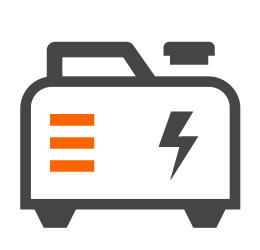What is Carbon Monoxide?
Carbon monoxide (CO) is an extremely dangerous gas that has no colour, smell or taste and cannot be detected by the human senses. It is produced when fossil fuel (gas, oil, coal, wood, etc.) is not burnt properly and when inhaled it combines with the haemoglobin in red blood cells and reduces the oxygen-carrying capabilities of the body.
Why is Carbon Monoxide So Dangerous?
Because carbon monoxide has no colour, smell or taste it is completely invisible and undetectable to human senses. The symptoms of carbon monoxide poisoning can also be easily mistaken for flu making it extremely dangerous and hard to recognise.
Inhaling carbon monoxide reduces the oxygen-carrying capability of the blood and leaves vital organs and tissue starved of oxygen. Every year in the UK, around 4000 people visit an A&E department with suspected carbon monoxide poisoning and around 60 people die as a direct result of exposure to carbon monoxide. Many more people die as a result of strokes and respiratory illnesses made worse by inhaling low levels of CO over prolonged periods.
Sources of Carbon Monoxide
Fuel-burning appliances should be maintained regularly but, no matter how rigorous maintenance schedules are, appliances may become damaged and stop functioning properly at any time, creating a source of carbon monoxide. The most common sources of carbon monoxide are:

Boilers
Be aware of flames burning orange or yellow instead of intense blue, and pilot lights that frequently go out.

Cookers
Watch out for dark, sooty stains on and above your cooker and lazy yellow or orange flames on your hob.

Fires
Fires becoming difficult to light could indicate that fuel is not burning correctly and that CO is being produced.

Wood Burners
Ensure you service your wood-burning appliances regularly and always use engineers approved by HETAS.

Barbecues
Smouldering coal produces high levels of carbon monoxide. Never use a barbecue inside or in an enclosed space.

Gas / Paraffin Heaters
Ensure your room has adequate ventilation and that your heater is well-maintained and regularly serviced.

Portable Generators
Portable generators should be maintained and serviced regularly. Always use them outdoors or in a well-ventilated space.

Neighbours
Carbon monoxide can seep through walls, be aware of neighbouring properties and ensure you have an audible CO alarm.
The difference between CO and CO2
Carbon monoxide has the chemical symbol of CO and is often mistaken for carbon dioxide, which has a chemical symbol of CO2. While the two gases are similar in terms of molecular structure, there is a big difference between how the human body interacts with them and how dangerous they can be to your health.
Carbon Dioxide (CO2)
Carbon dioxide has the chemical symbol of CO2 and consists of 1 x carbon atom and 2 x oxygen atoms. It occurs naturally in the Earth's atmosphere as a trace gas and is produced as a by-product of the human respiratory system. Carbon dioxide is usually odourless, but at high levels is known to have a very sharp acid smell.
Carbon Monoxide (CO)
Carbon monoxide has the chemical symbol of CO and consists of 1 x carbon atom and 1 x oxygen atom. It is produced when there isn't enough oxygen in the combustion process to form carbon dioxide. Carbon monoxide is colourless, odourless, and tasteless but is very poisonous to humans and animals.
Useful Contact Numbers
If you experience a carbon monoxide incident or need more help and advice about carbon monoxide safety, please use the following contact details.
Reviewed: 22/06/2023 (doc:542 V1.1). Our articles are reviewed regularly. However, any changes made to standards or legislation following the review date will not have been considered. Please note that we provide abridged, easy-to-understand guidance. To make detailed decisions about your fire safety provisions, you might require further advice or need to consult the full standards and legislation.



